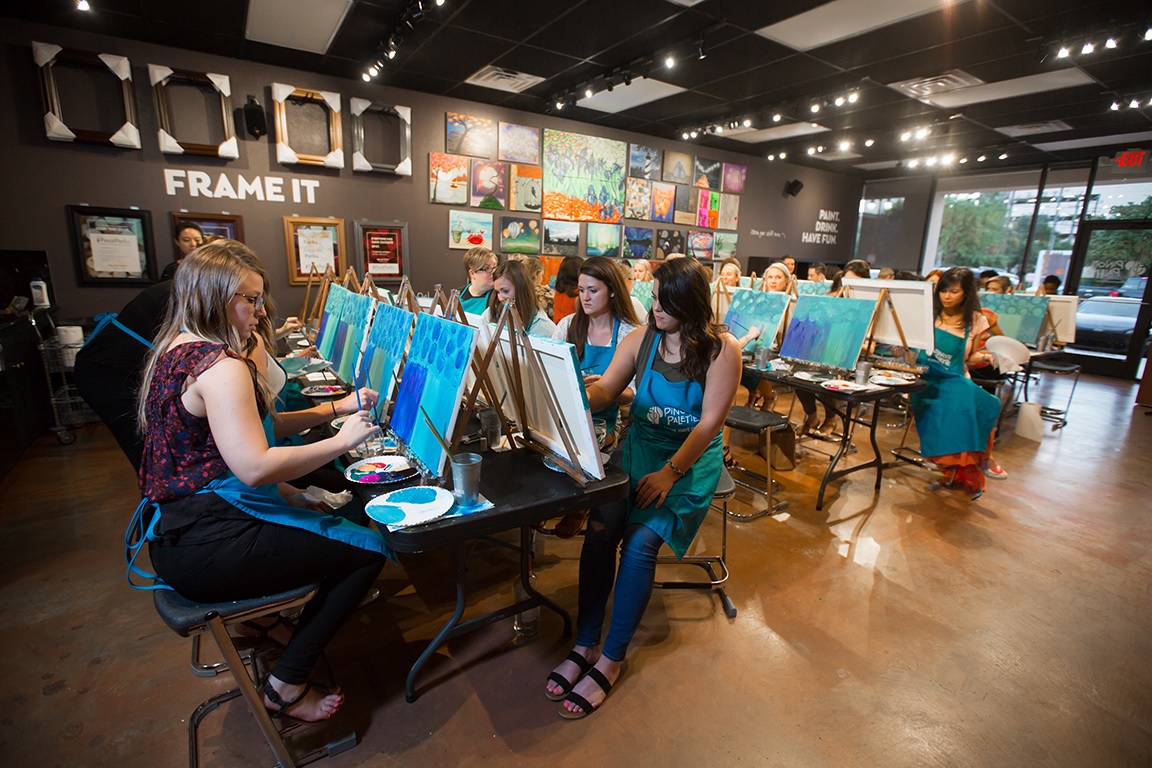Lighting Artwork: A Quick How-To
Whatever art you hang on your walls at home should be art that you absolutely LOVE. This is true whether we’re talking about a painting you did at Pinot’s Palette or a high-dollar piece commissioned from a pro.Things you love should be displayed in the best possible light, to keep them from fading and to highlight all of the amazing details that made you fall in love with them in the first place.

Certainly you want to avoid fading and heat damage. Additionally, art enthusiasts will tell you that the wrong lighting can muddle colors and change textural effects that the artist intentionally put in.
For this same reason, it’s important to have the right lighting when you’re painting (or sculpting or photographing). You want to make sure that the colors, shadows and highlights you see during the creation process will still be visible once you’ve hung your artwork on a wall or moved it to another studio.
To the casual painter, these details don’t matter. But we believe they’re important, and we want to give even the most casual painters the best opportunity to shine. That’s why all of our studios promise to shine gallery lighting that assures you and your painting look dazzling.
GENERAL RULES FOR LIGHTING ARTWORK
1. As a general rule, recessed overhead light is a good bet when trying to showcase a painting. Depending on the size and texture of the piece, however, you may want to play with angled lights on the sides of the painting. (Side lighting can really amp up large and/or heavily textured pieces.)
2. Lighting for artwork should be about three times brighter than the rest of the room. This ensures that the lighting actually helps your artwork stand out, rather than just getting absorbed into the room’s existing light.
3. If your lights just don’t seem to be doing the job, adjust the angle of the light or try a different kind of bulb until you’ve achieved the effect you want.
4. Finally, a word about frames: Framing your painting without glass removes the hassle of dealing with glare, but if you do have a painting behind a glass pane, look for nonreflective glass and place lighting so it does not shine directly onto the glass.
CHOOSING THE RIGHT LIGHTBULB
1. LED
Are you insuring your artwork? Then use LED. They’re great for valuable pieces because they don’t emit heat or UV rays. But even if we’re talking about your child’s artwork, if you want the piece to last as long as possible, know that LED lights are safe and reliable.
2. Incandescent Bulbs
The light from standard incandescent bulbs is deep and warm, and really brings out yellows and reds (without washing out blues and greens).
3. Halogen Lights
Halogens are the whitest of household lights, which means they’ll showcase your painting’s true colors. But be warned, halogen bulbs get super hot.
4. Fluorescent Lights
Nope, nope, nope. Fluorescent lights noticeably distort colors and are never flattering for artwork. They also fade colors faster than other lights.
5. Natural Light
On the one hand, sunlight is the most beautiful of all lights. And since it changes throughout the course of the day, your artwork can be viewed in many flattering ways. On the other hand, UV rays cause fading and discoloration, so if you want to keep your painting long-term, it’s not a good option.
Share How to Make a Gallery Wall | DIY Textured Faux Finish Wall

